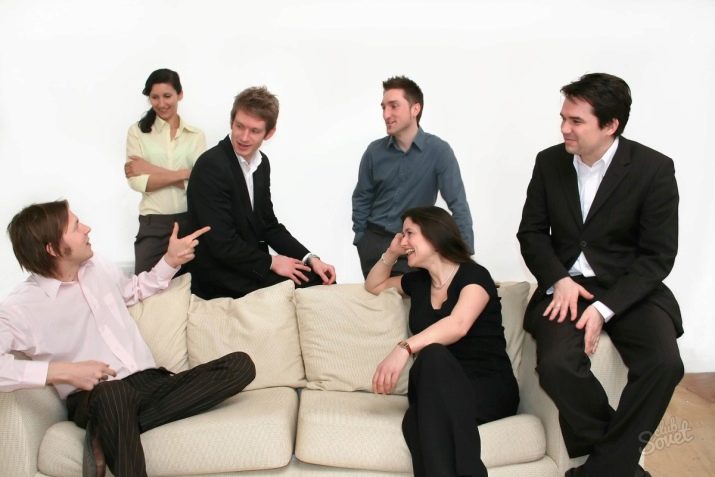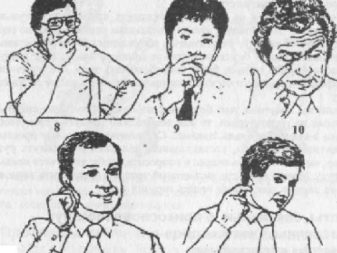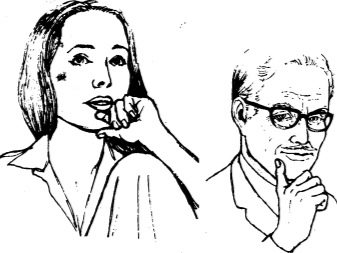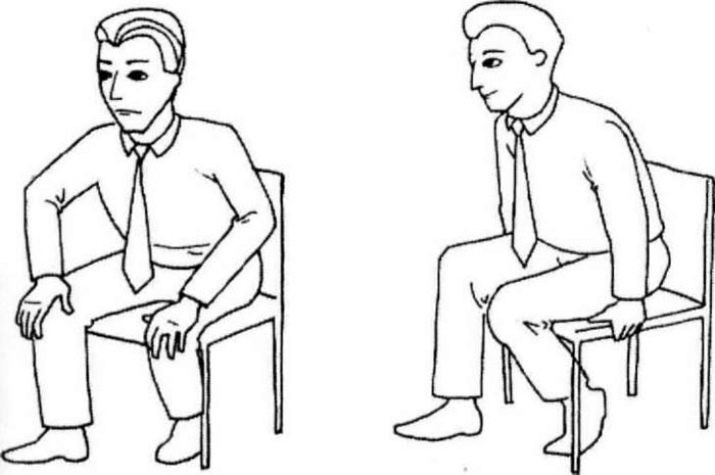Manners of communication: how to make your speech competent and beautiful?

A person is characterized not only by his appearance, but also by the ability to stay in society. This is especially true of speech skills, namely: the manner of communication, thanks to which a positive or negative opinion about a person is formed.

Manner of speech and style of speech
This concept includes the ability to communicate in the broadest sense of the word. This includes the tone of the narration, and gestures, and literacy of speech, as well as the ability not only to speak, but also to listen to the interlocutor.
If a person uses parasitic words in a conversation, interrupts another without letting him finish his thought, then he is considered the owner of bad manners. If his speech is literate and restrained, he skillfully speaks body language, then such a person will certainly make a good impression.

Speech is a powerful weapon, the great orators, with the help of their monologues, had an almost magical effect on the audience. That is why it is so important to learn how to speak correctly and beautifully.
The concept of "manner of communication" includes:
- Narrative tone. He can be calm, excited, playful, domineering, etc. Everything is important in competent speech - the volume of the voice, its height, strength, speed. Excessive length of words can tire the interlocutor, and too fast speech risks being misunderstood.
- Distance. You can contact the interlocutor publicly, intimately, etc.How exactly the person will speak will depend on the distance ( loudly, quietly, etc.).
- Behavior. It can be calm, cheeky, restrained, uncertain, etc. This concept also includes gestures. Physical movements are an integral part of the manner of speech.



Manners of communication are different: from dismissive or playful to serious and embittered. All of them, one way or another, are inextricably linked with the concept of "style".

It is on him that the emotional atmosphere depends, as well as the chosen correct speech means for conveying information. There are some techniques that characterize the conversational style:
- An imaginary dialogue ("I ask him ..., he answers me").
- Rhetorical question (“What could be a better gift than a book?”). With the help of this technique, the thoughts and emotions of the interlocutor are stimulated.
- Question answer. If the rhetorical question remains unanswered, then this technique includes its own answer to its own question. (“And what could I say? Of course not!”).
- Emotional exclamations. They serve to attract the attention of the interlocutor and are a bit like rhetorical questions (“Are you still asking ?!”)

These are examples of the use of good speech means to arouse a lively interest in the interlocutor. But here it is important not to forget about the voice, intonation, diction (do not swallow words), tonality.
Due to these components, expressiveness of speech is achieved. An important role is played by facial expressions and gestures, they are an integral element of communication.


Mastery of facial expressions and gestures
Body movements can tell a lot about a person and his intentions. There is a classification of the main gestures that are used in non-verbal speech to convey this or that information:
- open gestures. They talk about the friendliness of the interlocutor, and that he speaks sincerely. These include "open arms", where a person shows his hands, and his palms at the same time look up. Another gesture that speaks of goodwill is called "unbuttoning the jacket." You need to understand it literally, that is, it is unbuttoning or even taking off your jacket, which indicates that the person is comfortable next to the interlocutor and he is ready for a friendly conversation.


- In contrast to the gestures of openness are secretive gesturesthat speak of incredulity and doubt. This group includes the position of hiding the face with hands, rubbing the forehead and temples. Disagreement in gestures and intentions also speaks of secrecy. For example, a smile in a hostile mood suggests that a person hides his emotions in this way.


- defensive positions. The most common is the pose with crossed arms, which indicates that the interlocutor is "defensive". In this case, you should change the tactics of the conversation, otherwise further discussion will lead nowhere. If the interlocutor's fingers are clenched into a fist, then he is hostile, therefore, it is necessary to soften the intonation, switch to a moderate tone, or simply change the subject. If the interlocutor clasped his shoulders with crossed hands, then he is ready to interrupt the other in order to start defending his point of view.



- Thinking gestures. The most famous meditative positions are the position of the hand against the cheek or the rubbing of the index finger and thumb on the chin. This position is respectful and indicates the interest of the interlocutor in the conversation.But if a person's face rests on a hand with an index finger along the cheek (while the remaining fingers are located below the mouth), then he does not agree with the position of the interlocutor. When a person closes his eyes and pinches the bridge of his nose, he is thinking tensely about something.


- What gesture can speak of self-confidence? If the interlocutor lays his hands behind his head or behind his back, then this indicates some arrogance and even superiority.


- "Ready" position. If a person leans forward with his body, and his hands hold on to a chair or are on his knees, then this indicates that he is ready to end the conversation and leave.

As for facial expressions, there are signs by which you can determine the mood of the interlocutor:
- Pay special attention to the eyes. They, unlike the posture, will not be able to hide the true intentions. When a person experiences joy or excitement from what he hears, the pupils dilate, and with negative emotions, the pupils narrow. It is believed that in order to build trust in a conversation, you need to look into the eyes of the interlocutor most of the time (about sixty or seventy percent). Avoiding the gaze will not bring good results.

- Lips play an important role in facial expressions in non-verbal communication. A smile speaks of goodwill (if it does not contradict a hostile posture), if the lips are compressed, then the interlocutor is closed, with the curvature of the lips, one can read a sarcastic mood in a person. When sad and in a bad mood, the corners of the mouth drop. Smiling is a powerful weapon and helps in creating a welcoming atmosphere.


The ability to master facial expressions and body movements is an integral part of the manner of communication, and the better it is developed, the more competent and interesting thoughts will be expressed.
And knowledge of the sign language and facial expressions of the interlocutor will be a great advantage in conversation and will allow you to control any, even conflict, situation.

How to develop speech?
To change your communication skills for the better, you need to use the following recommendations:
- Read more classical literature (better even out loud and with expression). And it is important after reading this or that book to retell the content as competently and clearly as possible, avoiding unwanted and unnecessary words. It is better to record your retelling on a voice recorder, and then listen to it in order to analyze your mistakes and understand how the speech sounds from the outside. It is necessary to take into account not only the vocabulary itself, but also the tone of the narration, the speed and volume of speech. The same applies to the films you have watched, their retelling will help you understand exactly where the mistakes were made and what needs to be corrected.


- To master the elite speech, it is important to expand the vocabulary. To do this, you need not only to read books, but also to find out the meanings of all incomprehensible and unfamiliar words. It is better to get yourself a separate notebook in which the interpretation of words should be recorded. You just need to use them correctly and in accordance with the situation. This or that learned new expression will not make a proper positive impression on the interlocutor if it is pronounced “out of place”.


- In addition to reading classical literature, newspapers and magazines, you can solve crossword puzzles, they also expand their vocabulary with new concepts. You can buy educational games in stores and play with friends (for example, “guess the word from the description” and vice versa).


- Speech should be not only literate, but also beautiful. You can decorate it with various figurative expressions, metaphors, epithets and comparisons. You can find them in poetry collections. This is such an appropriate addition, which will testify to erudition and literacy. The main thing here is not to overdo it.

- Getting rid of parasitic words - this is one of the main criteria for correct speech. This determines the ability of a person to control his words, to hold on with dignity and confidence. The most common undesirable words are: in general, well, as it were, this is shorter, etc. All these phrases do not carry any semantic load, they simply clog speech and often interfere with its perception. The same can be said about slang expressions, they are simply incompatible with competent and beautiful speech, they must be excluded.


- During a conversation, it is important not only to monitor the content of speech, but also the intonation. Important words, spoken quietly and monotonously, will not be heard and perceived by the interlocutor, and a serious statement, said in a joking manner, will cause dissonance among the people around. A lot depends on intonation. For example, a dog does not understand words and their meanings, but they catch the intonations in the owner’s voice: when he praises her, and when he scolds, his tone changes from this, the intonation acquires one color or another. People can also be influenced by intonation, so this concept should not be relegated to the background.

- You can train in beautiful speech not in front of people, but in front of a mirror. You should tell yourself some passage from prose, a poem, or simply describe this or that event, while watching facial expressions, gestures, pronunciation speed and intonation.

There is another interesting exercise that will help you quickly and confidently select the right words. You need to choose some object that is in the house ( lamp, refrigerator, jewelry box, etc.), then start a stopwatch for five minutes (then more) and talk about this object in a competent language, using paths and stylistic figures. At first it will not be easy (five minutes to talk about a comb), but each time the words will come to mind faster and more varied.
Ultimately, this exercise will teach you how to talk about a simple frying pan in an interesting way for an hour in such a way that it will be difficult for the interlocutors to be distracted by something.

Thus, observing all these rules, it will be possible to change your manner of speech for the better, thereby gaining confidence and the ability to stay in society.
For information on how to learn to speak beautifully and competently, see the next video.





























Hello, the topic of speech and development is so interesting, in fact, as a last resort, learn beautiful gestures from Italians. It was entertaining!